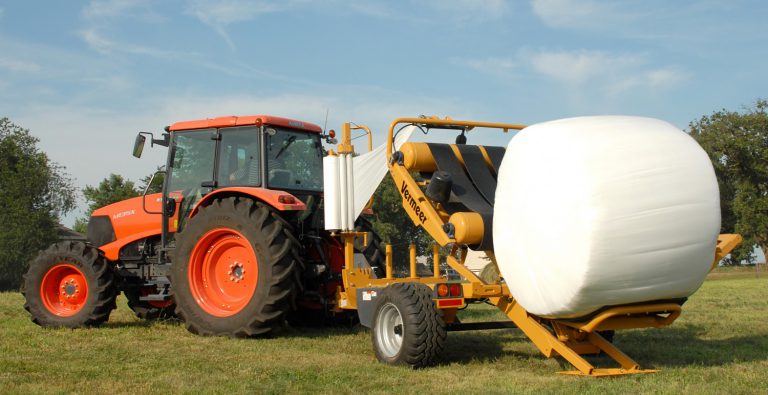
Baleage Tips
May 2019
Many industry experts suggest a minimum of six wraps per bale when making baleage. Various field and crop conditions impact the number of wraps per bale decision. Consult a local expert in your area as you consider this decision.
Percentage of Moisture at Harvest
- < 35% Moisture – Less fermentation. Requires an extra layer or two of plastic wrap. And needs to be fed as quickly as possible to reduce aerobic stability issues.
- 35-45% Moisture – Some fermentation, more layers of wrap needed.
- 45-55% Moisture – Generally recommended for best results.
- 55-65% Moisture – Great fermentation, but oftentimes it leaves a wet rank layer (1-2″ deep), which forms on the outside of the bale.
Recommendations on Wrapping
- First, netwrap the bale. It forms a smoother bale surface all around, containing stems and reducing the possibility of poking holes into the film. (Rodenticide-treated sisal twine has the potential to degrade film.)
- Plastic wrap film recommendation – Blown, low-density polyethylene about 1-mil thick, with 70-80% stretch. If you’re really aggressive on stretching, you may need to put another layer or two of wrap on to account for the reduced thickness of the material.
- Wrap as soon as possible after baling to prevent aerobic deterioration.
- Wrap close to the storage site to minimize handling.
- Store away from woods, where rodents and other “critters” are found.
- Avoid areas with sharp stubble and poorly drained soil.
- Periodically check for stems poking through the film, or rodent damage, and repair immediately.
- Don’t wrap during a rainstorm. Wet film loses its tackiness.
- Don’t handle bales until 12 hours or more after wrapping. Squeezing them can break film layers and potentially expose bales to oxygen, which can restart the aerobic phase.
*Baleage tips provided by Kevin Schinners, Ph.D., University of Wisconsin.
